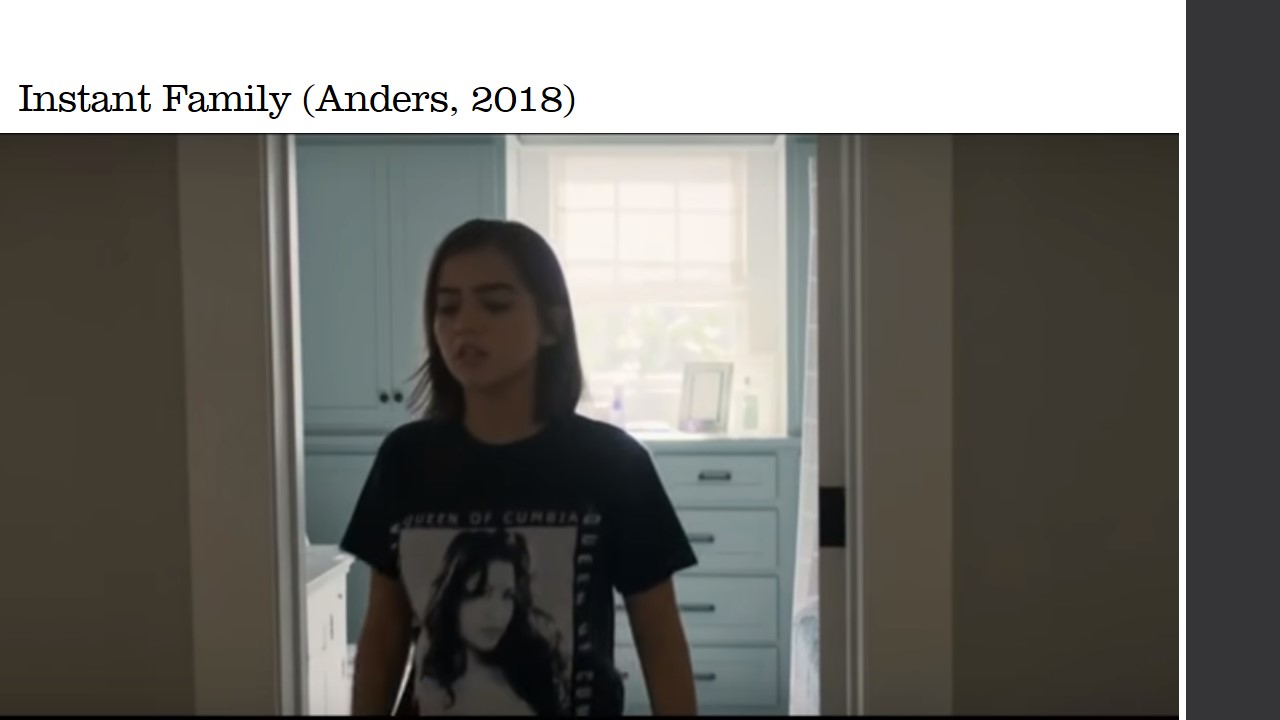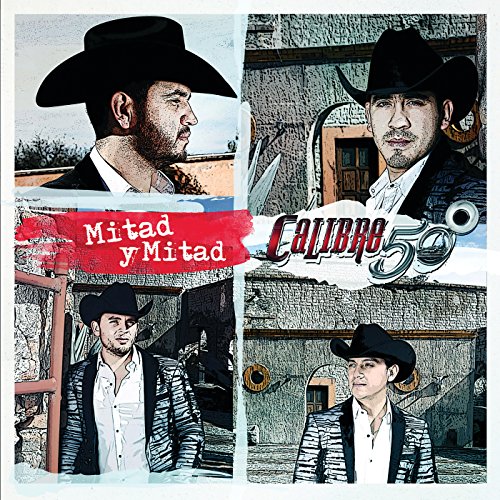
We begin with a stoic tale of vehicular death. Fuerza Regida‘s “Descansando” began life a couple months ago as an acoustic memorial to one Arturo Garcia, whose truck, according to the song, was la más chingona in all of Houston. “El Fue Arturo” was strummed and sung by the band’s frontman, Jesús Ortiz-Paz, in a rhythmically tricky combo of strong 3/4 guitar chords and prancing 6/8 vocal cadence — supremely groovy despite its bereftitude. The Blog surmises the ode “El Fue Arturo” went viral, as such odes tend to do, especially if they have the backing of Jimmy Humilde and Rancho Humilde Records. From there the song passed into the capable hands of Jesús’s full band, a tuba-bottomed sierreño trio. Well, a trio plus Jesús, who cedes guitar duties to his bandmates and focuses on singing with just the right note of bittersweet dead-homie resignation.
Last time I checked in with the Fuerzas, on their breakthrough single “Radicamos en South Central,” I was nonplussed. Something about “needing backup singers” and “sounding like they were confined to a concrete bunker.” This assessment wasn’t entirely wrong; but, though “Descansando” doesn’t change the band’s instrumentation or lack of backup singers at all, and changes tempos less often than “Radicamos,” the Blog has come around to their sound. The three-against-two patterns are just as complex as they were in 2019 — thanks especially to syncopating tubist Jose Garcia (no idea if he’s related to the late Arturo) — but the virtuosity here is warmer and more offhanded. The groove never flags. Note also Ortiz-Paz’s rhyming facility, his rapper-like delight in landing “tesoro”-“morro”-“Arturo”-“seguro” at the end of verse two. This music sublimates grief into pure physical pleasure. And its grief and pleasure have connected, landing it at #20 on Billboard‘s Hot Latin Songs this week thanks to both streaming and sales. VALE LA PENA y PICK TO CLICK
“Descansando” currently occupies prominent places on two Spotify playlists: “Corridos Perrones,” a mix of badass songs both new and five-ish years old, and “Corridos Tumbados,” a genre the Blog wants to get to the bottom of. Named for a song by feisty sierreño youth Natanael Cano, corridos tumbados also go by the name “trap corridos,” linking them attitudinally-if-only-maybe-musically to trap music. Which makes Natanael Cano the T.I. of our day, I guess? The name’s idiom remains mysterious to Gringo me. Literally “corridos that are lying down,” but also (maybe?) “corridos that have toppled,” the term captures the same chill/threatening vibe as the term “trap.” Are the corridos lying in wait? To topple others? Or are they just hanging out? And how paradoxically should we take the juxtaposition of “corridos,” these running narratives, with “tumbados”? Explanatory comments from Spanish speakers are welcome.
In the meantime, the Blog will be focusing on corridos tumbados for a while because they’re new and hot; and I, being neither, would like a healthy infusion of their youthful traffic-driving juices. Plus, I never really liked the genre until washing a pile of dishes while listening to the “Corridos Tumbados” playlist, much of which sounded pretty good. So now I’m searching for all the songs that appear on both “Tumbados” and “Perrones” because their appearance on the latter makes them badass by definition. (OK, actually canine by definition, but IDIOMS.) And their borderline with trap is fascinating. Besides the cultural and attitudinal links, what musical territory do sung tumbados — largely played by two acoustic guitars and a bass instrument — share with heavily synthesized trap sprechtstimme? Stay tuned!
Slightly less interesting is “Se Amerita” by Junior H, a recent teen who crows like a sad gallo and drops new songs like a hen drops eggs. This song is from one of his four(!) 2020 albums, the Fifties-ily named Cruisin’ With Junior H. (I wonder if he and Natanael Cano have a stoplight drag race.) I don’t wanna presume but I think it’s one of those narrative-free living-the-high-life implied narcocorridos that all the trad corrideros hate. Sample translated lyric: “He’s not of my blood but he demonstrated loyalty,” which sounds like shop talk in a very specific line of work, plus something about piloting a Cessna and taking receipt of a horse. Here’s Junior and pal, sans horse, hacking through the song for his TikTok loyalists.
Earlier this year, Sr. H turned up in a Billboard article by Griselda Flores with the excellent headline “Sad Sierreño,” inspired by Junior’s only album of 2021 so far, the perfectly titled $ad Boyz 4 Life. The title’s juxtaposition of wealth and sadness seems borrowed from trap, which also plays on the well-worn rap conceit that its practitioners are presenting some unvarnished peak into their real lives. Never has a Junior spoken more like a junior: “I am exactly how you hear me in my music, vulnerable and sensitive. I’m not trying to sound poetic or find the right words, I’m just being direct… How cool that my fans feel connected and have embraced my sad songs. At the end of the day, we all have feelings.” Sigh. I suppose; but that doesn’t mean those feelings deserve to be set to music. And wouldn’t “finding the right words” communicate Junior’s feelings more directly? But we’ll still give “Se Amerita” a VALE LA PENA because its distinctive sound is Junior’s own, and whoever’s playing lead requinto seems to have their wits about them.








 Joni Sandez is joking, but he’s eager to talk about parts of the norteño recording process usually kept under wraps. He knows from experience. A lifelong resident of southern California, Jonathan Sandez, 26, grew up playing guitar and bass. At 14 he joined the long-running L.A.-based
Joni Sandez is joking, but he’s eager to talk about parts of the norteño recording process usually kept under wraps. He knows from experience. A lifelong resident of southern California, Jonathan Sandez, 26, grew up playing guitar and bass. At 14 he joined the long-running L.A.-based 
 Fuerza Regida –
Fuerza Regida –  T3R Elemento ft. Gerardo Ortiz –
T3R Elemento ft. Gerardo Ortiz –  Grupo Arranke –
Grupo Arranke –  5. Banda Los Sebastianes –
5. Banda Los Sebastianes –  6. Virlán Garcia –
6. Virlán Garcia –  14. Calibre 50 –
14. Calibre 50 – 
 In 1995 the 23-year-old Tejano singer Selena Quintanilla died at the hand of her fan club president. She was already the biggest act in Tejano music, itself the hottest sound on the U.S. radio format known as Regional Mexican; but in death, Selena became a household name. Her posthumous bilingual album, Dreaming of You, debuted atop the Billboard 200 and became the best-selling Latin album of all time. A generation later Selena remains an icon, but the same cannot be said of Tejano music itself. “Tejano Market Hits a Lull,” read Billboard’s ominous 1997 headline, and in 1999 the Houston Press reported, “The Tejano scene is all but gone.” Over the ensuing decades the Regional Mexican format would turn to other sounds — most recently sierreño, an austere style that exploded in popularity after a different twenty-something singer, Ariel Camacho, died in a 2015 car accident.
In 1995 the 23-year-old Tejano singer Selena Quintanilla died at the hand of her fan club president. She was already the biggest act in Tejano music, itself the hottest sound on the U.S. radio format known as Regional Mexican; but in death, Selena became a household name. Her posthumous bilingual album, Dreaming of You, debuted atop the Billboard 200 and became the best-selling Latin album of all time. A generation later Selena remains an icon, but the same cannot be said of Tejano music itself. “Tejano Market Hits a Lull,” read Billboard’s ominous 1997 headline, and in 1999 the Houston Press reported, “The Tejano scene is all but gone.” Over the ensuing decades the Regional Mexican format would turn to other sounds — most recently sierreño, an austere style that exploded in popularity after a different twenty-something singer, Ariel Camacho, died in a 2015 car accident. After these styles’ respective stars died, why did keyboard-led, pop-friendly Tejano fade from the airwaves but sierreño — a drumless genre propelled by ornate tuba lines — became inescapable? To learn why, I’ll examine the aesthetic and commercial trajectories of both styles and the evolving Regional Mexican audience. I’ll also explore how the U.S. infrastructure for Mexican-American music has developed. Central to this story is the man who discovered Camacho, Ángel Del Villar, the owner of DEL Records and the person who realized modern sierreño could be viral youth music. Since Camacho died, Del Villar has kept the singer’s band going with two different replacement leaders; he’s also seen norteño stars like Gerardo Ortiz and Calibre 50 hop aboard the sierreño bandwagon. What insights do these styles’ respective death bumps give us into the machinations of the Regional Mexican industry and the identities of its U.S. audiences?
After these styles’ respective stars died, why did keyboard-led, pop-friendly Tejano fade from the airwaves but sierreño — a drumless genre propelled by ornate tuba lines — became inescapable? To learn why, I’ll examine the aesthetic and commercial trajectories of both styles and the evolving Regional Mexican audience. I’ll also explore how the U.S. infrastructure for Mexican-American music has developed. Central to this story is the man who discovered Camacho, Ángel Del Villar, the owner of DEL Records and the person who realized modern sierreño could be viral youth music. Since Camacho died, Del Villar has kept the singer’s band going with two different replacement leaders; he’s also seen norteño stars like Gerardo Ortiz and Calibre 50 hop aboard the sierreño bandwagon. What insights do these styles’ respective death bumps give us into the machinations of the Regional Mexican industry and the identities of its U.S. audiences?

 T3R Elemento – “Ojitos de Conejo” (from the DEL album The Green Trip)
T3R Elemento – “Ojitos de Conejo” (from the DEL album The Green Trip)




 Now, on with the countdown! This past weekend in Chicago I was playing the radio game “ScanQuiz!”, where you hit “Scan” on the car radio and try to name each song you hear before the radio moves on to the next station. Besides being a superfun test of mettle, ScanQuiz! is also a good way to survey who’s broadly popular with radio listeners. Shawn Mendes and Imagine Dragons are always lurking somewhere. Led Zeppelin will never die. And tubist Omar Burgos, by virtue of playing with both versions of Los Plebes del Rancho and los Plebes de Ulices Chaidez, has created one of the most dominant instrumental sounds on Chicago radio. Scan for a half hour and you’re likely to hear a sierreño song, probably played by one of Burgos’s bands; but even if the tubist is someone else, his bandleader owes his popularity to Burgos’s late employer Ariel Camacho, whose own posthumous hits still pop up like White Walkers.
Now, on with the countdown! This past weekend in Chicago I was playing the radio game “ScanQuiz!”, where you hit “Scan” on the car radio and try to name each song you hear before the radio moves on to the next station. Besides being a superfun test of mettle, ScanQuiz! is also a good way to survey who’s broadly popular with radio listeners. Shawn Mendes and Imagine Dragons are always lurking somewhere. Led Zeppelin will never die. And tubist Omar Burgos, by virtue of playing with both versions of Los Plebes del Rancho and los Plebes de Ulices Chaidez, has created one of the most dominant instrumental sounds on Chicago radio. Scan for a half hour and you’re likely to hear a sierreño song, probably played by one of Burgos’s bands; but even if the tubist is someone else, his bandleader owes his popularity to Burgos’s late employer Ariel Camacho, whose own posthumous hits still pop up like White Walkers. Burgos and Chaidez are also doing well in Mexico, where this week their year-old song “Porque Me Enamore” ascends to #2. (In El Norte, the song is #1 at RegMex radio.) You can catch them in the
Burgos and Chaidez are also doing well in Mexico, where this week their year-old song “Porque Me Enamore” ascends to #2. (In El Norte, the song is #1 at RegMex radio.) You can catch them in the  Better yet is the sierreño bass (not tuba) trio at #11. “Loco Enamorado” represents a new bandwagon leap for Remmy Valenzuela, whom the Blog has admired for his accordion chops and for the lovely rasp in his voice’s upper register. Here he’s playing rhythm guitar on a song about how crazy in love with you he is. Spare a listen for the lead requinto player, who executes a bunch of exciting flourishes that have inspired YouTube tutorials. (Spare also his name, if you know it, because I can’t figure out who the guy is.) I’d say Valenzuela’s voice alone would make any song worth hearing, but his NO VALE LA PENA followup banda single “Mi Amante” disproves that theory. But in “Loco Enamorado,” his voice and some mean requinto picking sell an entirely decent romantic ballad that has the temerity to move back and forth between two different keys. Pick to Click!
Better yet is the sierreño bass (not tuba) trio at #11. “Loco Enamorado” represents a new bandwagon leap for Remmy Valenzuela, whom the Blog has admired for his accordion chops and for the lovely rasp in his voice’s upper register. Here he’s playing rhythm guitar on a song about how crazy in love with you he is. Spare a listen for the lead requinto player, who executes a bunch of exciting flourishes that have inspired YouTube tutorials. (Spare also his name, if you know it, because I can’t figure out who the guy is.) I’d say Valenzuela’s voice alone would make any song worth hearing, but his NO VALE LA PENA followup banda single “Mi Amante” disproves that theory. But in “Loco Enamorado,” his voice and some mean requinto picking sell an entirely decent romantic ballad that has the temerity to move back and forth between two different keys. Pick to Click!
 Coronel’s new album El Jerry (Rancho Humilde) is a wonderful mix of guitar-tuba virtuosity and shaggy dog accordion waltzes, with subdued brass hitting the upbeats. Some hasty cartel googling reveals the title mafioso may be one Gerardo Treviño Robles of the Gulf Cartel, but “El Jerry” is clearly an aesthetic ploy for Coronel to come off as a swaggering badass. His band affords him that luxury. Or rather, his bands — there are a couple different ones on this album, and he seems to perform with a third lineup, none of whose names I can find. (Maybe if you have a CD booklet in front of you…?) Whoever they are, the lead requinto and accordion players are having all kinds of fun, and the rhythm sections excel at setting up a variety of breezy grooves. NorteñoBlog directs you to the kiss-off
Coronel’s new album El Jerry (Rancho Humilde) is a wonderful mix of guitar-tuba virtuosity and shaggy dog accordion waltzes, with subdued brass hitting the upbeats. Some hasty cartel googling reveals the title mafioso may be one Gerardo Treviño Robles of the Gulf Cartel, but “El Jerry” is clearly an aesthetic ploy for Coronel to come off as a swaggering badass. His band affords him that luxury. Or rather, his bands — there are a couple different ones on this album, and he seems to perform with a third lineup, none of whose names I can find. (Maybe if you have a CD booklet in front of you…?) Whoever they are, the lead requinto and accordion players are having all kinds of fun, and the rhythm sections excel at setting up a variety of breezy grooves. NorteñoBlog directs you to the kiss-off  Long time readers may remember that, back in 2014, NorteñoBlog was
Long time readers may remember that, back in 2014, NorteñoBlog was  The quartet Los Titanes de Durango has been having fun lately, first
The quartet Los Titanes de Durango has been having fun lately, first